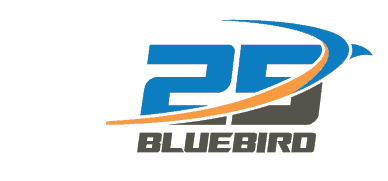In today’s online world, Ethernet provides a robust and efficient foundation for data communication. As businesses and individuals increasingly rely on interconnected devices and seamless data transfer, understanding the various types of Ethernet networks is important. Each type is designed to cater to specific needs, offering distinct advantages that align with different use cases.
Let’s delve into the world of Ethernet and explore its diverse network types.
Ethernet
The foundational form of Ethernet, known as Ethernet or 10BASE-T, operates over twisted-pair copper cabling. It provides a data transfer rate of 10 megabits per second (Mbps) and remains relevant in some legacy systems. While its speed might seem modest compared to modern standards, Ethernet laid the groundwork for subsequent advancements.
Fast Ethernet (100BASE-T)
As demands for faster data transmission grew, Fast Ethernet emerged. Operating at 100 Mbps, this Ethernet network retains the same twisted-pair copper cabling infrastructure as its predecessor. With technology always improving, faster Ethernet options have become available, making this type a little less popular. At the same time, it still remains a good option for businesses that require steady speed.
Gigabit Ethernet (1000BASE-T)
With the rise of more data-intensive applications, Gigabit Ethernet, which is called such because it operates at 1 gigabit per second (Gbps), entered the scene. Leveraging the same twisted-pair copper cabling, this type of network brings a tenfold increase in speed compared to Fast Ethernet and is widely used in modern local area networks (LANs).
40-Gigabit and 100-Gigabit Ethernet
At this point, you’ve likely caught on to the naming scheme of different types of Ethernet. As such, you know—correctly—that 40-Gigabit and 100-Gigabit Ethernet give speeds of 40 Gbps and 100 Gbps, respectively, making them some of the fastest available. Because of their speed, these Ethernet networks often use specialized cabling and are commonly deployed in enterprise environments where colossal data transfers are routine.
Ethernet over Fiber (10GBASE-SR/LR)
For scenarios demanding high-speed and long-distance data transmission, Ethernet over fiber-optic cables comes into play. This technology offers superior bandwidth and distance capabilities compared to copper-based Ethernet. Fiber-optic Ethernet, like 10GBASE-SR and 10GBASE-LR, operates at 10 Gbps and enables fast and reliable connections over extended distances, making it ideal for connecting buildings, campuses, and data centers.
The Importance of Knowing the Different Ethernet Types
Ethernet networks have undergone a remarkable evolution, catering to the diverse needs of modern data communication. Whether managing a small office network, a data center, or a sprawling campus, understanding the various types of Ethernet networks can empower you to make informed decisions that drive efficient and seamless data communication.
As technology advances, Ethernet networks remain a steadfast cornerstone, enabling the interconnected world we rely on. In a world where connectivity is the lifeblood of progress, Bluebird Network stands as a guiding light, offering Ethernet services that empower businesses to thrive. With our unparalleled expertise, comprehensive solutions, and dedication to client success, we are not just a provider of Ethernet services—we are a strategic ally in your journey toward seamless, efficient, and cutting-edge data communication. Contact us today to get started!

Recent Comments